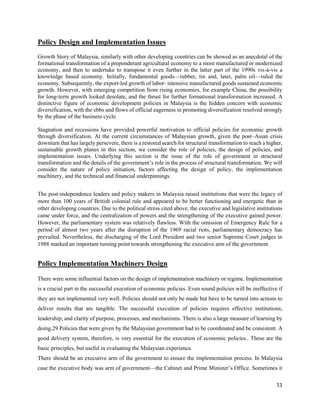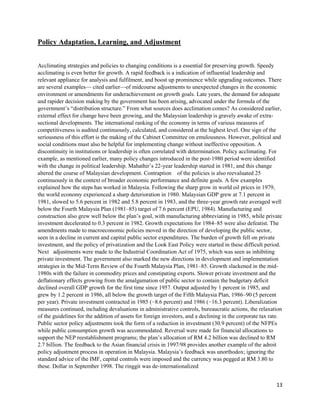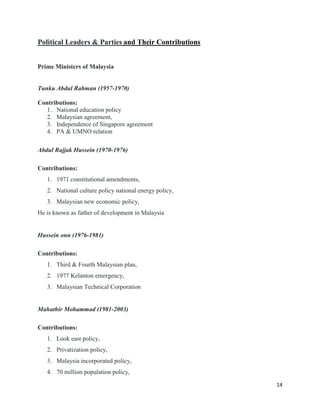The document is a group assignment submitted to the Bangladesh University of Professionals, analyzing Malaysia's development pattern and its transition from a resource-based economy to a more diversified manufacturing-centric one. It highlights the role of policy-making, industrialization, and privatization in Malaysia's economic transformation, emphasizing the significance of electronics and palm oil industries. The study concludes that a coordinated approach to policy reforms has been crucial for Malaysia's economic success.
















